Low-growing phlox: description of varieties, planting and care

The name "phlox" (translated from Greek "flame") is associated with bright beautiful flowers belonging to the Sinyukhovye family. This family is subdivided into more than 70 species and contains about 1500 varieties. Despite the fact that these flowers originated in North America, due to their unpretentiousness to climatic conditions and rich colors, they began to be cultivated in various latitudes.

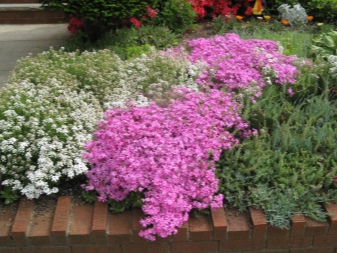


Types and varieties of phlox
The phlox family includes plants that differ in many respects, but are similar in structure to small flowers, united in attractive colored panicles. Due to their unpretentiousness to weather conditions and care, they are popular both among professional florists and among ordinary summer residents.
Along with the variety of colors, these flowers exude a pleasant honey aroma, so beloved by Russian bees and gardeners.


Representatives of this family differ from each other not only in color - the classification is carried out according to a number of parameters:
- by the type of stem: tall, undersized, creeping, dwarf;
- by the duration of renewal and planting: perennial and annual;
- by planting and flowering time: early and late;
- by flower size: large and small;
- by color parameters: white, pink, blue, combined, etc.
Florists create various attractive phlox combinations in the flower beds thanks to the many colors and shades, and the pleasant aroma enlivens them, giving uniqueness.



Annuals
Among the abundance of various species of the phlox family, there are many perennial representatives and only one annual is the Drummond phlox, named after the botanist who brought it from America to Europe 300 years ago. The latter is the most outstanding in beauty, but also the most fastidious in terms of climatic conditions and more demanding in terms of content.
The annual species has about a dozen varieties, radically different from each other in color and shape. Sometimes it is even difficult to believe that these flowers belong to the same species. Inflorescence panicles are dense and sparse. The diameter of each flower does not exceed 20 mm, but the panicles themselves reach up to 150 mm in diameter.

The colors of the petals have a wide spectrum: from bright, variegated to various combinations and shades. At the same time, contrasts between the middle and edges of the petals and smooth gradient transitions are often observed.
This species is characterized by a variety of petals: from rounded to star-shaped with a fringe. With proper care, the density of the flowers creates a crown that completely covers the stem and leaves, creating the illusion of the unity of all flowers in the inflorescence. In central Russia, this phlox blooms from late spring to October and is destroyed only by the first frosts.
Under natural conditions, the Drummond phlox bushes reach a height of 0.5 m, but more often gardeners use varieties bred by breeders that grow no more than 25 cm.The root system, located almost on the surface, is very thin and vulnerable, which must be taken into account when caring for the plant ...


This type includes the following most common varieties, which differ in the color of the petals:
- red: "Beauty Scarlet", "Beauty Crimpson";
- coral: "Chanel";
- white: "Snow", "Snow globe", "White charm";
- blue: "Blue frost", "Sailor", "Blue sky", "Blue";
- pink: "Prima Donna", "21st century" - light pink;
- yellow: "Sunny Bunny", "Lemon Miracle", "Edmond";
- multi-colored: "Cheerful Gnome", "Renaissance", "Spring", "Beautiful Gnome", "Fragrant Cloud";

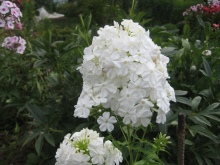
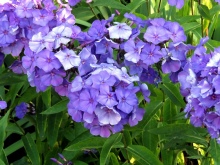
Annual low phlox is usually grown from seed. When planting, it must be borne in mind that healthy shoots will germinate only if the seeds are placed on the surface of the soil in the light.
Perennial
Perennial phloxes are very unpretentious to weather conditions and caring for them. They can give their beauty for a long time, but on condition that certain rules for their sowing and maintenance are still observed. These flowers love moisture, but its excess is destructive to them. Phloxes easily tolerate the frosts of central Russia, without requiring additional insulation, which added to their popularity among summer residents and professional flower growers.
Their bloom pleases with rich colors and a subtle pleasant aroma. The flower has 5 pistils and 1 stamen, and the leaves are oblong.

The diameter of the flower varies from 10 to 40 mm, uniting in an inflorescence of up to 50-100 pieces. Their height is 10-25 cm. Perennial undersized phloxes have several main subspecies:
- multiflorous - flowers up to 4 cm in diameter, tubular-collar-shaped (up to 100 per inflorescence), with a pleasant smell and a wide range of colors;
- Douglas - has different colors, up to 10 cm high, small flowers are combined into inflorescences of 3-5;
- spread out - up to 30 cm high with narrow leaves up to 5 cm, has a characteristic pleasant aroma and pale lilac flowers, collected in bunches of up to 10 pcs.;
- subulate - a plant with a creeping stem about 15 cm long, with flowers (up to 2 cm in diameter) of various colors and sharp evergreen hard leaves;
- snow - refers to creeping (carpet) species with small fragrant flowers (about 1.5 cm in diameter) of white, purple, pink and orange shades;
- dwarf - a creeping plant with a stem length of up to 30 cm, with fragrant flowers of various shades, including yellow, rare among phloxes.

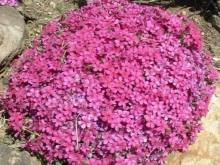
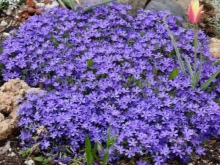
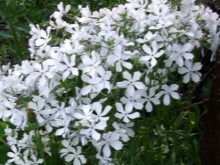

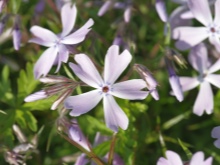
Planting and care features
In open ground, phloxes are planted with seeds, seedlings and cuttings. All varieties of this plant, although frost-resistant, require the following conditions of maintenance and care without fail:
- when choosing a place for planting phlox, it is necessary to take into account that this plant is photophilous and can die in constant shade;
- the soil for them should be moderately moist, fertile and loose;
- regular balanced watering is necessary: with a lack of moisture, it stops blooming, and with an excess, it quickly rots.
Phloxes achieve the best decorative appeal in well-lit areas, in moderately moist, loose soil. The colors of the petals of plants in this case will be brighter than in the shade. For the density of flowering, wilted flowers should be removed.

For seedlings, seeds are sown in mid-March in containers with compost intended for seedlings to a depth of 5 mm. The room temperature must be maintained within 17-20 degrees.
If this condition is met, the seeds will germinate in a week.
To grow seedlings from seeds indoors, they must be stratified, that is, cooled in the refrigerator for two weeks.
It is advisable to make a pick in two weeks, when the first two leaves appear, after which (3-4 days) the sprouts must be protected from direct sunlight, covering with paper or matte film. Monthly phlox sprouts need to be fed with mineral fertilizers.
Seedlings and seeds are planted in open soil in the second decade of May, when frosts finally stop, while the distance between the seedlings should be about 25 cm. In this case, the seeds are soaked in an aqueous nutrient solution a day before planting.

Both the planted seedlings and the seeds must be watered for the first two weeks from a sprayer and covered with glass or transparent film, and ventilated at the beginning of the day. Then it is necessary to carry out regular watering at the rate of 10-12 liters of water per square meter. m. In autumn, the stems of perennial plants should be cut almost flush with the ground cover, leaving small shoots for successful wintering. It is advisable to burn the cut stems to prevent the risk of infection in the next season.
Phloxes are quite unpretentious. Caring for them mainly consists in timely moistening, pest control, loosening and feeding the soil, and removing weeds.
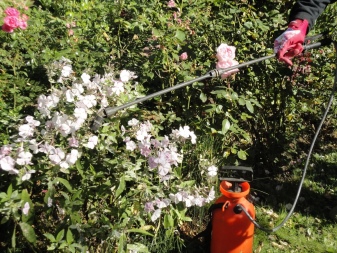

For the colors of undersized phlox, see below.







































































































The comment was sent successfully.